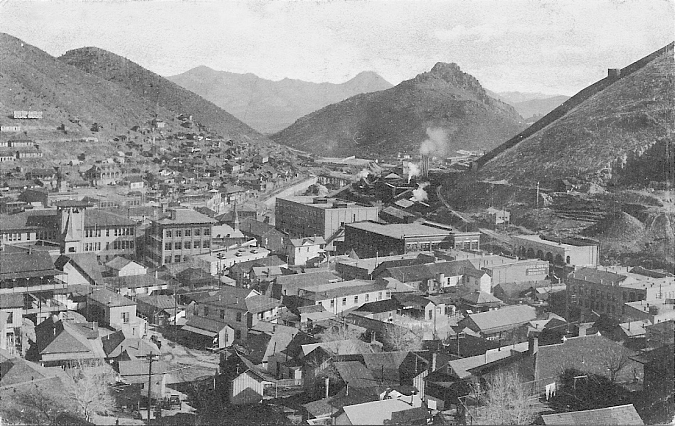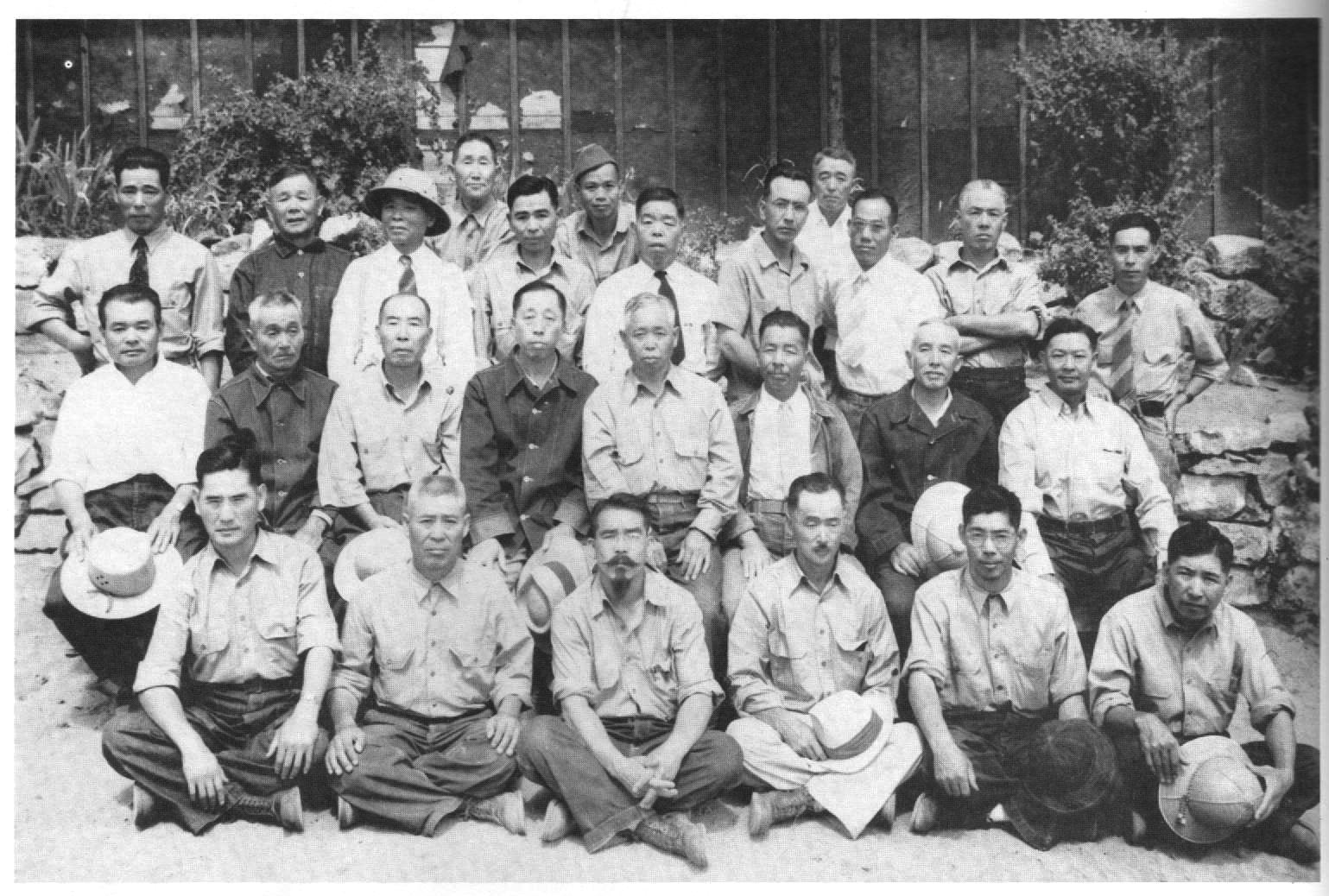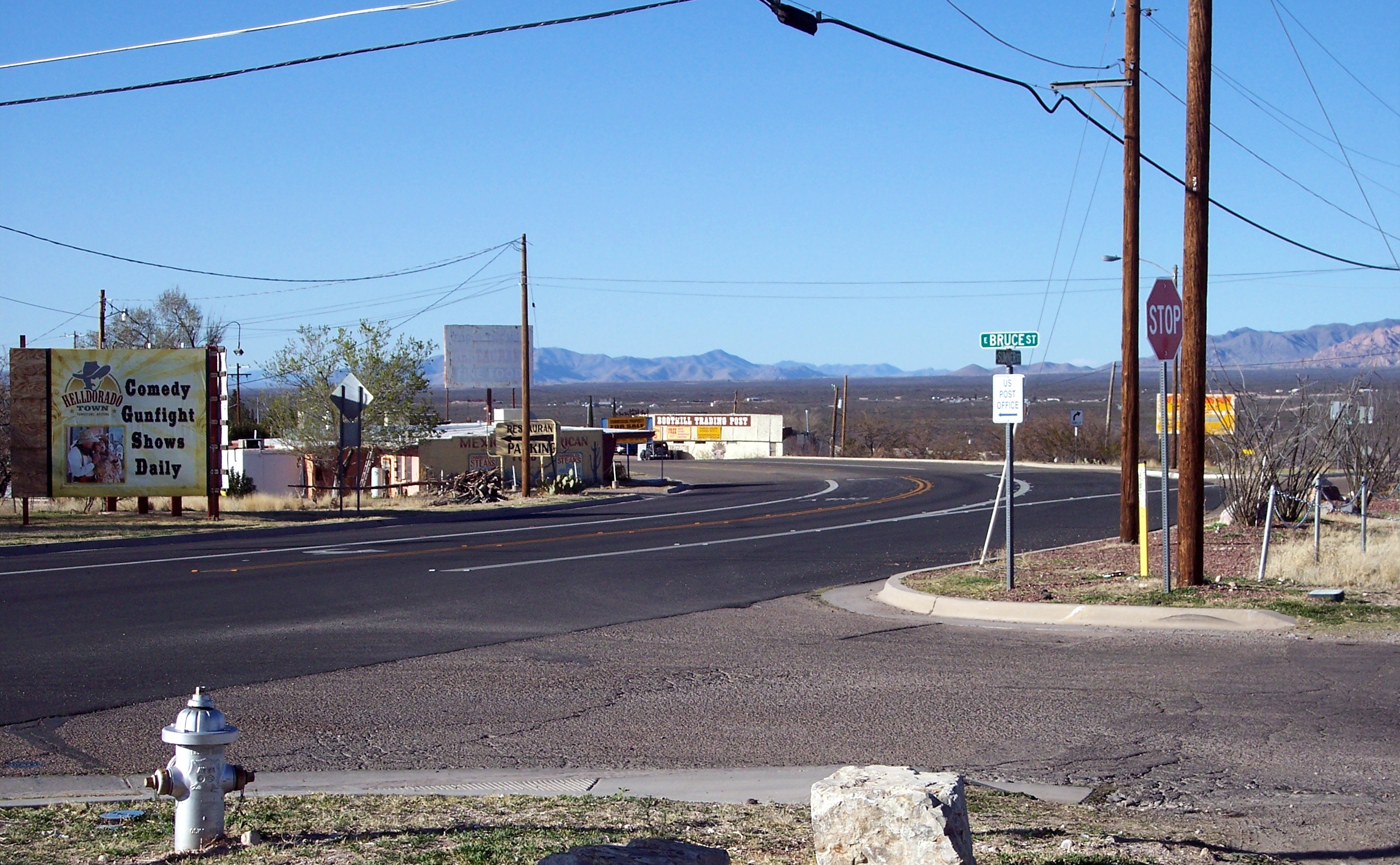|
Rodeo, New Mexico
Rodeo is a census-designated place (CDP) in Hidalgo County, New Mexico, United States, at . It lies less than from the border with Arizona on New Mexico State Road 80. As of the 2010 census, the population of Rodeo was 101. History Founded in 1902 as a rail stop on the El Paso and Southwestern Railroad line running from Bisbee, Arizona to El Paso, Texas, it became the center for cattle shipping in the San Simon Valley. Two views exist as to the source of Rodeo's name. One suggests it derives from the Spanish word ''rodeo'', meaning "roundup" or "enclosure", in reference to cattle shipping. However, the noun ''rodeo'' is derived from the Spanish verb ''rodear'' meaning "to surround" or "to go around". The El Paso and Southwestern railroad runs east across the southern part of the state and after passing through Antelope Pass turns south to Rodeo continuing to Douglas, Arizona, and then north to Bisbee, going around the Chiricahua Mountains. Geography Rodeo is in western Hidal ... [...More Info...] [...Related Items...] OR: [Wikipedia] [Google] [Baidu] |
Census-designated Place
A census-designated place (CDP) is a concentration of population defined by the United States Census Bureau for statistical purposes only. CDPs have been used in each decennial census since 1980 as the counterparts of incorporated places, such as self-governing cities, towns, and villages, for the purposes of gathering and correlating statistical data. CDPs are populated areas that generally include one officially designated but currently unincorporated community, for which the CDP is named, plus surrounding inhabited countryside of varying dimensions and, occasionally, other, smaller unincorporated communities as well. CDPs include small rural communities, edge cities, colonias located along the Mexico–United States border, and unincorporated resort and retirement communities and their environs. The boundaries of any CDP may change from decade to decade, and the Census Bureau may de-establish a CDP after a period of study, then re-establish it some decades later. Mo ... [...More Info...] [...Related Items...] OR: [Wikipedia] [Google] [Baidu] |
Bisbee, Arizona
Bisbee is a city in and the county seat of Cochise County in southeastern Arizona, United States. It is southeast of Tucson and north of the Mexican border. According to the 2020 census, the population of the town was 4,923, down from 5,575 in the 2010 census. History Bisbee was founded as a copper, gold, and silver mining town in 1880, and named in honor of Judge DeWitt Bisbee, one of the financial backers of the adjacent Copper Queen Mine. The town was the site of the Bisbee Riot in 1919. In 1929, the county seat was moved from Tombstone to Bisbee, where it remains. Mining industry Mining in the Mule Mountains proved quite successful: in the early 20th century the population of Bisbee soared. Incorporated in 1902, by 1910 its population had swelled to 9,019, and it sported a constellation of suburbs, including Warren, Lowell, and San Jose, some of which had been founded on their own (ultimately less successful) mines. In 1917, open-pit mining was successfully introdu ... [...More Info...] [...Related Items...] OR: [Wikipedia] [Google] [Baidu] |
List Of Census-designated Places In New Mexico
New Mexico is a state located in the Western United States. New Mexico has several census-designated places (CDPs) which are unincorporated communities lacking elected municipal officers and boundaries with legal status. List of census-designated places Former census-designated places Notes See also * List of cities in the United States {{Lists of CDPs by state Populated places in New Mexico New Mexico ) , population_demonym = New Mexican ( es, Neomexicano, Neomejicano, Nuevo Mexicano) , seat = Santa Fe, New Mexico, Santa Fe , LargestCity = Albuquerque, New Mexico, Albuquerque , LargestMetro = Albuquerque metropolitan area, Tiguex , Offi ... Settlements List ... [...More Info...] [...Related Items...] OR: [Wikipedia] [Google] [Baidu] |
Lordsburg, New Mexico
Lordsburg is a city in and the county seat of Hidalgo County, New Mexico, United States. Hidalgo County includes the southern "bootheel" of New Mexico, along the Arizona border. The population was 2,797 at the 2010 census, down from 3,379 in 2000. History Lordsburg was founded in 1880 on the route of the Southern Pacific Railroad. The Continental Divide Trail starts at the Crazy Cook Monument and travels through Lordsburg. Local lore is that Billy the Kid washed dishes in Lordsburg hotel kitchens such as the Stratford Hotel, and La Fonda, the historic "inn at the end of the Santa Fe Trail" during his teenage years. New Mexico state song Lordsburg is the birthplace of the official New Mexico state song, " O Fair New Mexico". It was written by Lordsburg resident Elizabeth Garrett, the blind daughter of famed sheriff Pat Garrett. In 1917, Governor Washington Ellsworth Lindsey signed the legislation making it the official state song. In 1928, John Philip Sousa presented Governor ... [...More Info...] [...Related Items...] OR: [Wikipedia] [Google] [Baidu] |
Arizona State Route 80
State Route 80 (SR 80) is a roughly arc-shaped highway lying in southeastern Arizona that, with New Mexico's State Road 80, is a relic of the old U.S. Route 80, now truncated from San Diego to Dallas. This segment of old US 80 was not closely paralleled by Interstate 10, which lies to its north and instead supplants the old and more direct (defunct in eastern Arizona) State Route 86. Route description The route begins at an intersection with SR 10 Bus. in Benson near an Amtrak station. The route heads south until it exits the city limit of Benson, where it turns slightly southeast. SR 80 turns eastward, entering St. David as Patton Street. In St. David, SR 80 turns south as Lee Street. SR 80 steers southeast into desert terrain, (south section San Pedro Valley), intersecting SR 82 just north of Tombstone, where SR 80 becomes Fremont Street. The road intersects SR 90 heading south. In Bisbee, (southern Mule Mountains), the road meets SR 92 at a traffic circle. ... [...More Info...] [...Related Items...] OR: [Wikipedia] [Google] [Baidu] |
Road Forks, New Mexico
Road Forks is an unincorporated community in western Hidalgo County, New Mexico, United States, in the southwestern corner of the state. It is east of the Arizona border, due east of Stern's Mountain, and at the junction of Interstate 10 and NM Route 80. It is southwest of the city of Lordsburg and east of Steins Steins may refer to: People * Kārlis Šteins, Latvian astronomer * Walter Steins, Dutch Jesuit priest Astronomy * 2867 Šteins, a small main-belt asteroid Video games * '' Steins;???'' See also * Stein (other) * Trevor Stine .... Road Forks had a post office from shortly after its founding in 1925 until 1955, when postal services were transferred to Lordsburg.Julyan, Robert (1998) "Road Forks" ''The Place Names of New Mexico'' (revised edition) University of New Mexico Press, Albuquerque, New Mexicopage 300 History Road Forks was founded in 1925 by Mr. and Mrs. G. H. Porter, who gave it its name. Notes Populated places established i ... [...More Info...] [...Related Items...] OR: [Wikipedia] [Google] [Baidu] |
Interstate 10 In New Mexico
Interstate 10 (I-10) in the US state of New Mexico is a long route of the United States Interstate Highway System. I-10 traverses southern New Mexico through Hidalgo, Grant, Luna, and Doña Ana counties. The interstate travels west–east from the Arizona state line to the interchange with I-25 in Las Cruces, and then travels north–south to the Texas state line. US Route 80 in New Mexico (US 80) was replaced by I-10. Route description I-10 enters Hidalgo County, New Mexico from Cochise County, Arizona as a four lane divided highway. The highway travels east through rural southwest New Mexico, passing between Steins Mountain and Attorney Mountain, part of the Peloncillo Mountains, before passing by the ghost town of Steins. Continuing east, the northern terminus of New Mexico State Road 80 (NM 80) is intersected, serving Rodeo, followed by NM 338. Passing Lee Peak, the highway turns southeast, entering Lordsburg. US 70 is inte ... [...More Info...] [...Related Items...] OR: [Wikipedia] [Google] [Baidu] |
Chiricahua Mountains
The Chiricahua Mountains massif is a large mountain range in southeastern Arizona which is part of the Basin and Range province of the west and southwestern United States and northwest Mexico; the range is part of the Coronado National Forest. The highest point, Chiricahua Peak, rises above sea level, approximately above the surrounding valleys. The range takes its name from the Chiricahua Apaches native to the region. The Chiricahua Mountains and other associated ranges, along with Sulphur Springs Valley on the west and the San Simon Valley on the east, form the eastern half of Cochise County in southeast Arizona. The Pedregosa Mountains are found at the southern end of the Chiricahua Mountains, while the Swisshelm Mountains are located to the southwest. The northwest end of the Chiricahua mountains continue as the Dos Cabezas Mountains beyond Apache Pass and the Fort Bowie National Historic Site. Access to the Chiricahua Mountains and Coronado National Forest is t ... [...More Info...] [...Related Items...] OR: [Wikipedia] [Google] [Baidu] |
Douglas, Arizona
Douglas is a city in Cochise County, Arizona, United States that lies in the north-west to south-east running Sulpher Springs Valley. Douglas has a border crossing with Mexico at Agua Prieta and a history of mining. The population was 16,531 in the 2020 Census. History The Douglas area was first settled by the Spanish in the 18th century. Presidio de San Bernardino was established in 1776 and abandoned in 1780. It was located a few miles east of present-day Douglas. The United States Army established Camp San Bernardino in the latter half of the 19th century near the presidio, and in 1910 Camp Douglas was built next to the town. Douglas was founded as an American smelter town, to treat the copper ores of nearby Bisbee, Arizona. The town is named after mining pioneer Dr. James Douglas and was incorporated in 1905. Two copper smelters operated at the site. The Calumet and Arizona Company Smelter was built in 1902. The Copper Queen operated in Douglas from 1904 until 1931, w ... [...More Info...] [...Related Items...] OR: [Wikipedia] [Google] [Baidu] |
Spanish Language
Spanish ( or , Castilian) is a Romance languages, Romance language of the Indo-European language family that evolved from colloquial Latin spoken on the Iberian peninsula. Today, it is a world language, global language with more than 500 million native speakers, mainly in the Americas and Spain. Spanish is the official language of List of countries where Spanish is an official language, 20 countries. It is the world's list of languages by number of native speakers, second-most spoken native language after Mandarin Chinese; the world's list of languages by total number of speakers, fourth-most spoken language overall after English language, English, Mandarin Chinese, and Hindustani language, Hindustani (Hindi-Urdu); and the world's most widely spoken Romance languages, Romance language. The largest population of native speakers is in Mexico. Spanish is part of the Iberian Romance languages, Ibero-Romance group of languages, which evolved from several dialects of Vulgar Latin in I ... [...More Info...] [...Related Items...] OR: [Wikipedia] [Google] [Baidu] |
San Simon Valley
The San Simon Valley is a broad valley east of the Chiricahua Mountains, in the northeast corner of Cochise County, Arizona and southeastern Graham County, with a small portion near Antelope Pass in Hidalgo County of southwestern New Mexico. The valley trends generally north–south but in its northern portion trends northwest–southeast. The San Simon Valley separates the Chiricahua Mountains, Dos Cabezas Mountains and Pinaleno Mountains on the west from the Peloncillo Mountains and the smaller Whitlock Mountains to the east. Geography The foot of the valley is at the northern end where the ephemeral San Simon River, that flows northwest through the valley to Safford in Graham County, enters the Gila River. At its southern end the valley merges into the separate San Bernardino Valley which trends southwest–northeast. The head of the valley, , is at the junction of the two valleys, along the divide between the south side of Rustler Canyon Creek watershed and Paramore C ... [...More Info...] [...Related Items...] OR: [Wikipedia] [Google] [Baidu] |
Cattle
Cattle (''Bos taurus'') are large, domesticated, cloven-hooved, herbivores. They are a prominent modern member of the subfamily Bovinae and the most widespread species of the genus '' Bos''. Adult females are referred to as cows and adult males are referred to as bulls. Cattle are commonly raised as livestock for meat (beef or veal, see beef cattle), for milk (see dairy cattle), and for hides, which are used to make leather. They are used as riding animals and draft animals ( oxen or bullocks, which pull carts, plows and other implements). Another product of cattle is their dung, which can be used to create manure or fuel. In some regions, such as parts of India, cattle have significant religious significance. Cattle, mostly small breeds such as the Miniature Zebu, are also kept as pets. Different types of cattle are common to different geographic areas. Taurine cattle are found primarily in Europe and temperate areas of Asia, the Americas, and Australia. Zeb ... [...More Info...] [...Related Items...] OR: [Wikipedia] [Google] [Baidu] |






